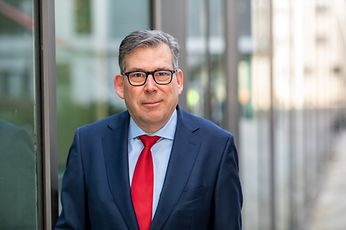25 Years ETF trading: interviews series #1
25 Years ETF trading: interviews series #1 Claus Hecher, Regional Head of ETF Sales DACH and Nordics, BNP Paribas AM
25 years ago, on April 11, 2000, Deutsche Börse made history: It was the first stock exchange in Europe to launch ETF trading. On the occasion of our anniversary, we look back at the experiences of some ETF pioneers.
We start with Claus Hecher, Regional Head of ETF Sales DACH and Nordics, BNP Paribas AM.
Mr. Hecher, how have investor needs and investment behavior changed since the introduction of ETFs?
When I entered the ETF business in 2008 and built up sales for iShares in Germany, Lyxor was really the only other significant ETF provider. With our strategy, we focused on convincing primarily institutional investors, fund-of-funds, and the asset management divisions of leading banks that equity ETFs were a better alternative to traditional mutual funds. The central arguments were the lower costs, the transparent structure, and the successful performance compared to the average performance of actively managed funds.
What developments have surprised you most in the last 25 years?
I was less surprised by the new trends than by the sometimes impressively high speed with which ETFs were adopted. Particularly noteworthy was the growth of bond ETFs, the rapid boom in sustainable ETFs, and the success story of the now significant group of private investors who invest in the capital markets as self-directed investors or regularly build wealth through ETF savings plans. In addition, some waves of fee reductions from various ETF providers were surprising, through which ETF investors can benefit from attractive fees.
Were there any particular moments in your career with ETFs that have stuck with you?
I found the open "holy war" between physical and synthetic replication from around 2010 particularly interesting. Synthetic replication was offered at the time for efficiency reasons by new providers from the capital market business of investment banks such as X-trackers, Comstage, and Lyxor. Ultimately, physical ETFs won the race, although there are some exposures, such as US large-cap indices, for which synthetic replication offers advantages. Over the years, the ETFs offered by banks were transferred to the asset management area. Also unforgettable are challenging market phases with high volatility, such as the financial crisis in 2008 or the short market slump at the beginning of the Covid pandemic, in which the liquidity of ETFs proved useful.
What advice would you give to new investors who want to invest in ETFs?
Before investing, an investor should be aware of how long their investment horizon is. For long-term investments, they can choose the right mix of equity and bond indices and possibly add commodity or gold exposure to diversify the portfolio. The selection of suitable indices or ETFs is crucial. Should it be a standard portfolio or one that takes sustainability criteria into account? Important selection criteria are both the fees and the relative performance of ETFs on the same indices from different providers. In addition, there is often a choice between distributing and accumulating ETFs. The replication method is a matter of taste, and the fund domicile can also play a role. Not to be forgotten is the liquidity on the stock exchange and the question of how narrow the bid-ask spread is in trading.
We have around 2,400 ETFs listed on Xetra. Is there still room for innovation?
ETFs have always been a catalyst for innovation. Following bonds, sustainability, factor investing, and thematic approaches, active ETFs are now at the beginning of a new wave of innovation. In addition, a combination of market exposure and hedging strategies could be a useful addition to the ETF landscape in the future.
